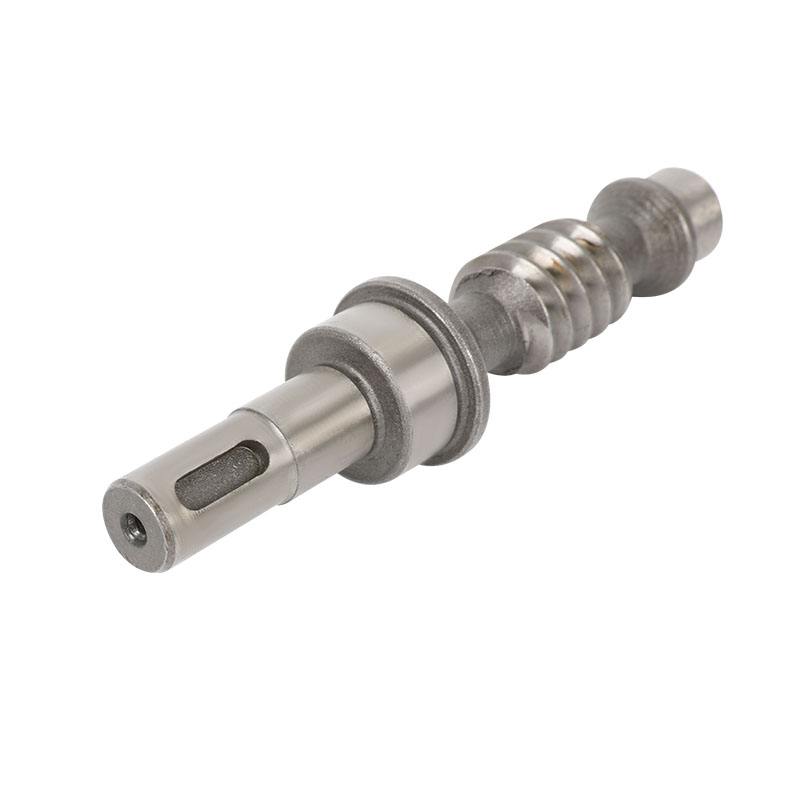Optimizing the structure of worm gear reducer accessories to reduce vibration and noise is a very important design task, especially in applications that require low noise and high precision. The following are some possible optimization methods, through which the vibration and noise of worm gear reducers can be significantly reduced:
1. Optimize the meshing design of worm gear
Improve the meshing angle between worm and worm wheel: The meshing angle between worm wheel and worm directly affects the smoothness and noise level of transmission. Optimizing the meshing angle can reduce the impact force during meshing, thereby reducing noise. Generally, a lower worm angle (such as 14.5° or 20°) can reduce noise and vibration during meshing.
Optimize tooth shape and tooth surface design: By adopting involute tooth shape or improved gear cutting technology, the contact between worm wheel and worm can be smoother during meshing, and the sudden change of tooth surface contact can be reduced, thereby reducing vibration and noise. Especially in low-speed and high-load working environments, accurate tooth shape design can significantly improve noise and vibration performance.
2. Choose suitable accessory materials
Reduce the vibration conductivity of materials: In the design of reducer accessories, choosing high damping materials (such as aluminum alloy, copper alloy, composite materials, etc.) can effectively reduce the transmission of vibration. For example, using copper or alloy materials to make worm gears can reduce vibration and noise caused by metal conduction.
Improve the surface treatment of materials: Using surface hardening treatment or coating (such as nitriding treatment, surface spraying, etc.) can improve the wear resistance of worm gears and worms and reduce the noise caused by friction. At the same time, the improvement of surface smoothness also helps to reduce friction and wear and improve the smoothness of operation.
3. Optimize the processing accuracy of worm gears
Improve processing accuracy: The accuracy of worm gears and worms has a great influence on the noise and vibration of reducers. By improving the manufacturing accuracy of worm gears and worms (such as the pitch tolerance and tooth shape error of worm gears and worms), it can ensure that their meshing is smoother, reduce irregular tooth surface contact, and thus reduce vibration and noise.
Gear grinding and polishing: Precision grinding and polishing processes are used to surface treat the worm wheel and worm to make the meshing surface smoother, which can reduce friction loss and noise. These precision processes can effectively reduce vibration and noise during low-speed operation.
4. Optimize the bearing and support system of the reducer
Bearing selection and arrangement: Selecting high-quality, low-noise bearings can reduce vibration and noise caused by improper bearing clearance or rough surface. In addition, reasonable bearing arrangement (such as centered bearings or double bearing design) can better support the worm and worm wheel and reduce vibration caused by misalignment.
Reduce bearing friction and clearance: Optimizing the bearing design and lubrication system can reduce bearing friction and thus reduce noise. Excessive bearing clearance will lead to increased vibration, so try to ensure the precise matching of bearings during design.
5. Improve the design of the reducer housing
Enhance the rigidity and vibration absorption of the housing: The housing material and structural design of the worm gear reducer will also affect the transmission of vibration and noise. By using a thickened housing or an enhanced support structure, the rigidity of the housing can be improved and the transmission of external vibration can be reduced. In addition, the use of sound-absorbing materials or soundproof covers (such as rubber gaskets or polyurethane gaskets) can effectively reduce noise.
Improve the ventilation design of the housing: Proper ventilation and heat dissipation design can not only improve the heat dissipation efficiency of the reducer, but also reduce the unstable operation caused by overheating, and indirectly reduce the noise caused by temperature fluctuations.
6. Optimization of the lubrication system
Choose the right lubricant: The viscosity and type of lubricant have a great influence on the noise and vibration of the reducer. The right lubricant can not only reduce friction, but also slow down the aging of the lubricant, thereby reducing the friction noise and vibration caused by insufficient lubrication.
Regular replacement and maintenance of lubricants: Regularly check and replace the lubricant to ensure that the lubrication system works in the best condition, which helps maintain the stability of the reducer and reduce friction and noise caused by oil film rupture.
7. Load management of reducers
Avoid overload operation: When the worm gear reducer is overloaded, it may generate greater vibration and noise due to increased friction. Therefore, ensuring that the reducer operates within the rated load range and avoiding overload can effectively reduce noise and vibration.
Optimize the load distribution of the reducer: Rationally design the load distribution to avoid excessive load on a certain component. The uniform load of the reducer accessories can reduce the occurrence of vibration and improve the stability of the overall transmission system.
8. Prevent resonance
Avoidance of resonant frequency: When designing a worm gear reducer, pay attention to avoid resonance with the natural frequency of the system. Vibration and noise caused by resonance can be avoided by changing the rigidity of the structure, material properties or adding shock absorbers.
Vibration and noise can be significantly reduced by optimizing the structure, material selection, processing accuracy and lubrication system of the worm gear reducer accessories. The key optimization parts include the meshing design of the worm gear, material selection, processing accuracy, bearing selection, housing design, etc. Through these optimizations, not only can the running stability and transmission efficiency of the reducer be improved, but also vibration and noise can be reduced, the working environment can be improved, and the service life of the equipment can be extended.

 English
English русский
русский bahasa Indonesia
bahasa Indonesia
